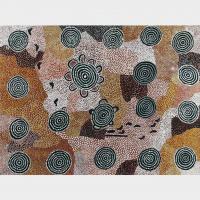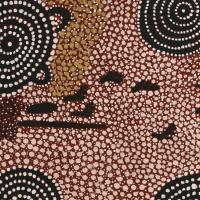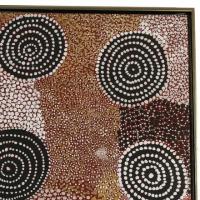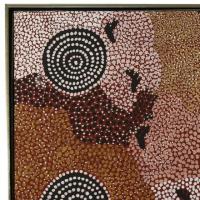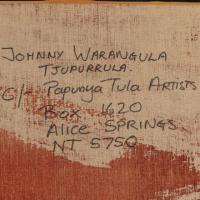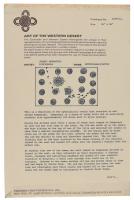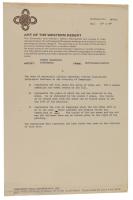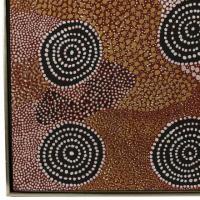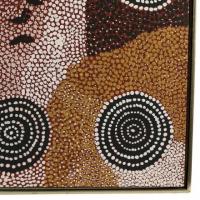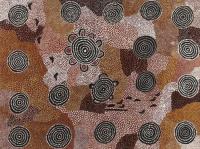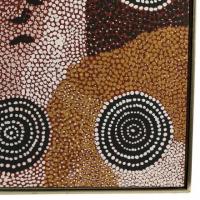
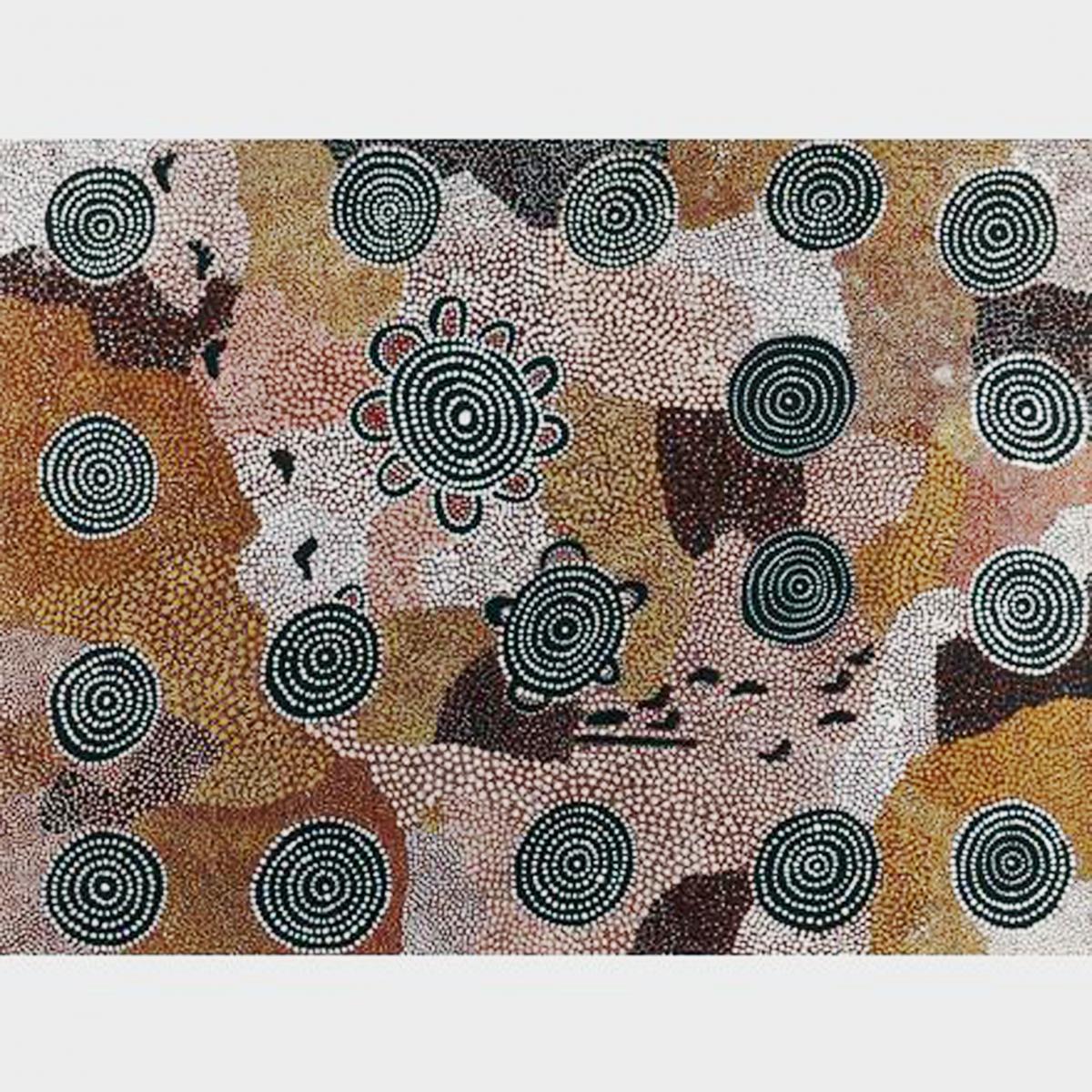
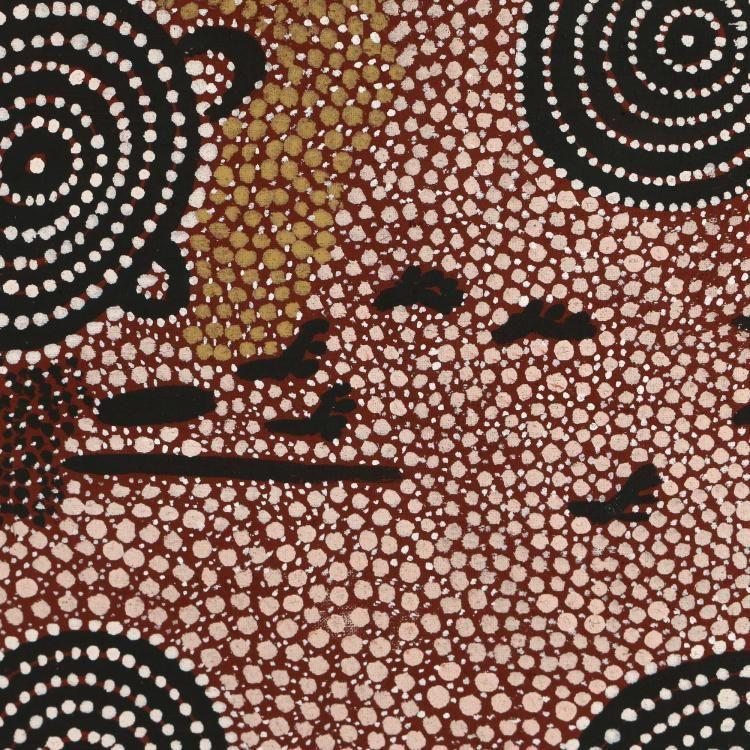
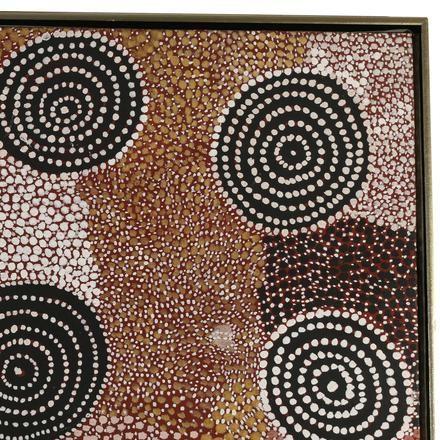
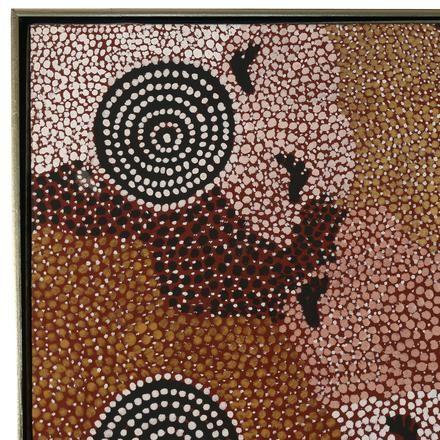
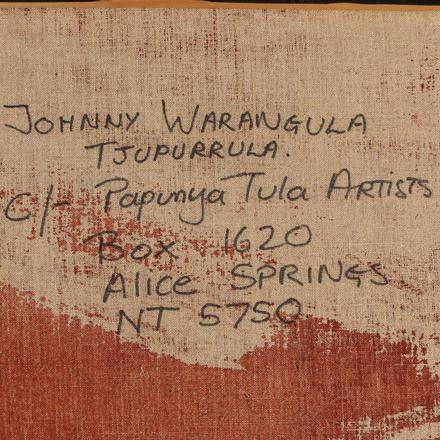
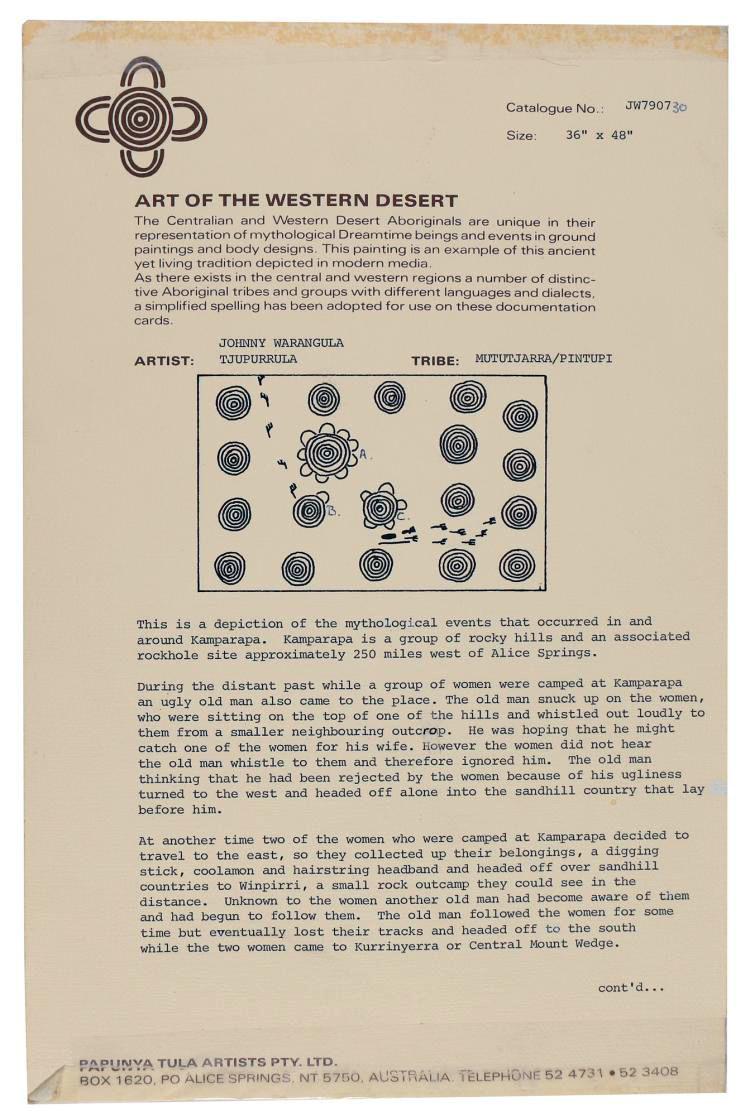
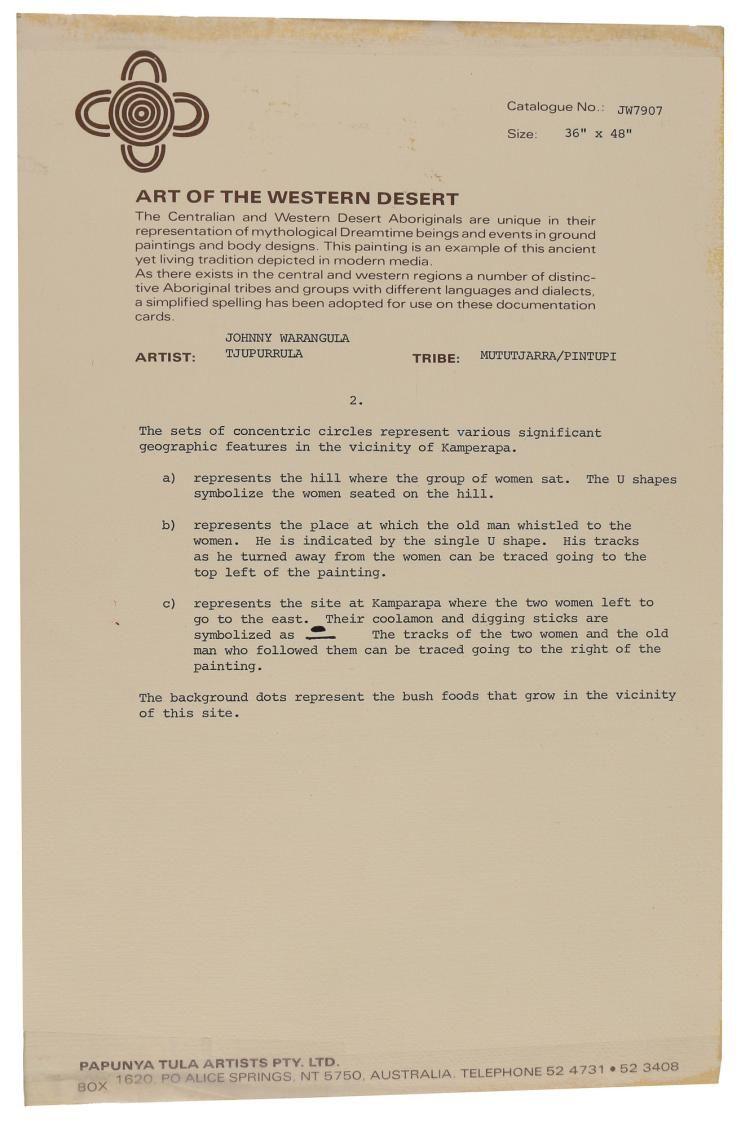
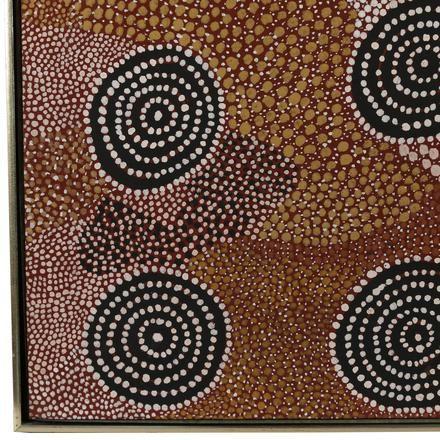
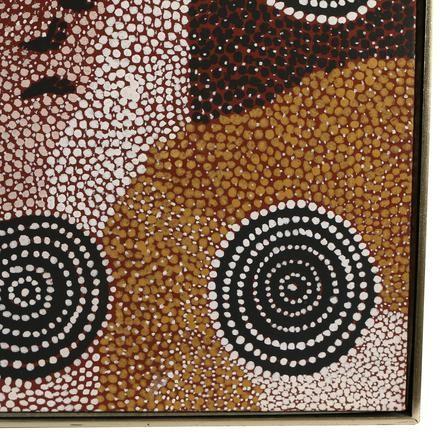
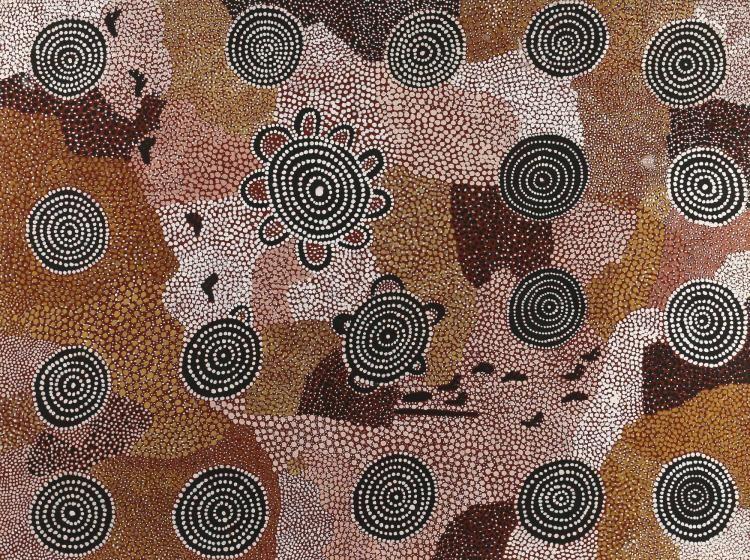
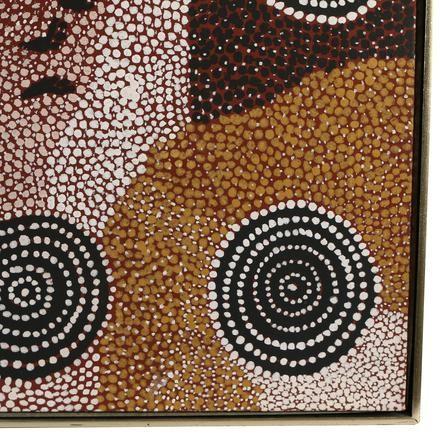
This object is eligible for a Certificate of BADA Provenance
The BADA Standard
- Since 1918, BADA has been the leading association for the antiques and fine art trade
- Members are elected for their knowledge, integrity and quality of stock
- Our clients are protected by BADA’s code of conduct
- Our dealers’ membership is reviewed and renewed annually
- Bada.org is a non-profit site: clients deal directly with members and they pay no hidden fees
Australian Aboriginal Painting,
Johnny Warangula Tjupurrula (1918-2001),
Kamparapa landscape,
Synthetic polymer paint on composition board.
1979.
One of the founders of Papunya Tula Artists and most renowned painters of the desert art movement, whose signature techniques of overdotting produced effects of "tremulous illusion".
Provenance: Purchased from Papunya Tula Artists PTY LTD by the current owner; according to her notes the painting was completed in July 1979 and purchased in August 1979.
Catalogue No. JW7907, signed and with an address on verso, Carrol Condit Galleries label on the frame, with documentation from Papunya Tula Artists PTY. LTD.
Dimensions: 48 inches high x 36 inches wide. (121.92cm x 91.44cm)
See https://www.ngv.vic.gov.au/essay/johnny-warangula-tjupurrula-painting-in-a-changing-landscape/ for more information on the artist.
JOHNNY WARRANGULA TJUPURRULA (1918-2001)
JOHNNY WARANGKULA TJUPURRULA
(Design & Art Australia Online, Writers: Vivien Johnson, 1994, Last updated:2011).
Born at Mintjilpirri c 1920. As a child, Johnny lived a traditional lifestyle in the desert, never attending European school. He told me his mother was of mixed Luritja/Warlpiri/Pintupi descent and his father was Luritja/Warlpiri. He recalled his first frightened contact with whites as a big boy hiding in the trees from a plane which his people took for a mamu or devil. Later, the family moved in to Hermannsburg mission, where Johnny worked as a labourer constructing the airstrip. During the familys stay at Hermannsburg, Johnny passed through the ceremonies for manhood.
From there he moved to Haasts Bluff for the construction of another airstrip, and more labouring work. He followed the road making to Mt Liebig, Yuendumu and Mt Wedge and later worked on the construction programs of various settlements. In 1954 he and Nosepeg Tjupurrula were chosen as Aboriginal representatives to meet the Queen. He was living in Haasts Bluff when the bulk of the population was moved to the new settlement of Papunya in 1960.
When Geoffrey Bardon arrived at the Papunya settlement in 1971, Johnny soon made known to him his interest in obtaining art materials. He rapidly developed a distinctive personal style of overdotting, often several layers, creating effects of what Bardon called tremulous illusion. He remained a major force in the painting movement until the mid 80s, when his output was reduced by failing eyesight. Johnnys work often depicted events around Tjikarri, Yipa, Kilyalnga and the Ehrenberg Ranges (Ilypili and Kampurarrnga) where he had established one of the first outstations in Central Australia. His work often depicts the Water Dreaming stories, notably Kalipinypa, as well as Yam, Fire and Egret stories and stories from around Nyilppi and Nyalpilala his fathers Dreaming. Johnny lived in Papunya with his second wife Gladys Napanangka . He had two daughters from a previous marriage and two sons and six daughters from his marriage to Gladys.
Dimensions
121.92cm x 91.44cmCondition report
ExcellentStock number
NY8805The BADA Standard
- Since 1918, BADA has been the leading association for the antiques and fine art trade
- Members are elected for their knowledge, integrity and quality of stock
- Our clients are protected by BADA’s code of conduct
- Our dealers’ membership is reviewed and renewed annually
- Bada.org is a non-profit site: clients deal directly with members and they pay no hidden fees


